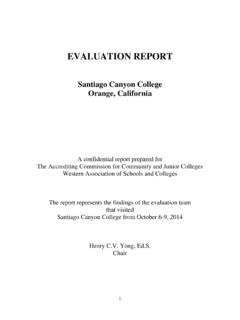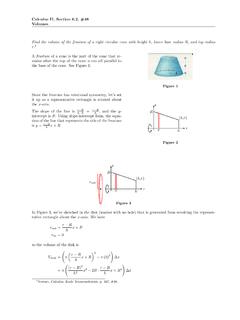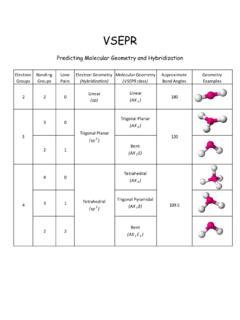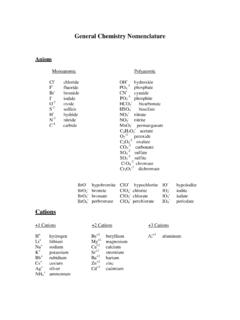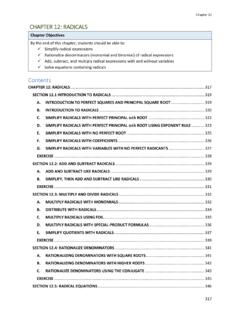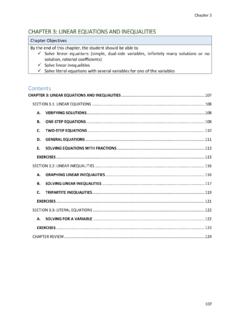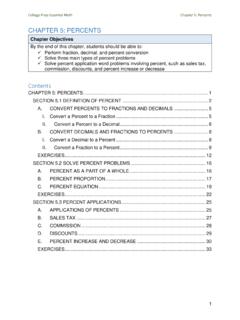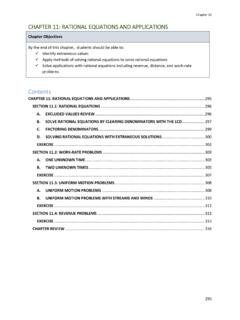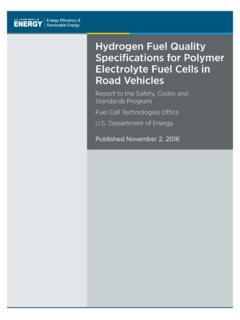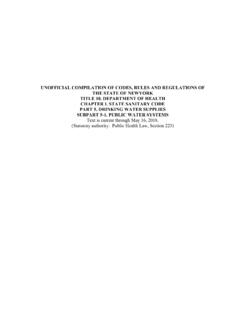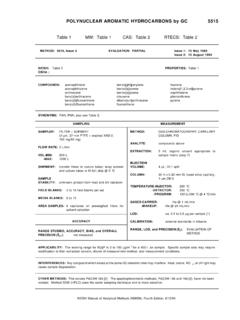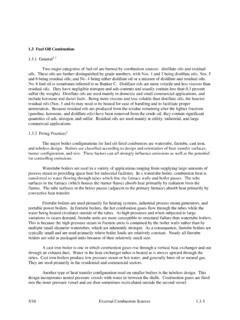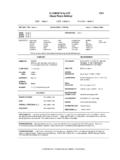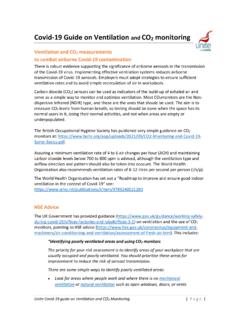Transcription of GRADE 1 - Santiago Canyon College
1 GRADE 1 Max points = 170 PASSING = 119/170 = 70% MATH 5-POINTS EACH Add how many questions missed from 41-50, multiply by 5= _____ A MULTIPLE CHOICE 3-POINT EACH Add how many missed in questions 1-40 = _____ B 1. Total points possible: .. 170 2. ADD A+B .. _____ Subtract 2 from 1 for YOUR SCORE .. _____x 100 = _____% 2 (3-points each) 1. Hard water contains an abundance of a. sodium b. iron c. lead d. calcium carbonate 2. Groundwaters generally have consistent water quality that include a. having a higher total dissolved solids content than surface water b. having a lower mineral content than surface waters c.
2 Having lower pH values than surface waters d. having a higher amount of bacteria than surface waters 3. What is the primary responsibility of water treatment plant operators? a. avoid boil-orders b. minimize costs in producing drinking water c. produce safe and pleasant drinking water d. successfully pass operator certification examinations 4. Baffling inside a storage facility may be needed to prevent hot spots and a. straight through flows b. long contact times with disinfectants c. high chlorine residuals throughout the facility d. high temperatures throughout the storage facility 5. Which mechanism or problem has caused more waterborne disease outbreaks (WDO) in the United States than any other reported factor?
3 A. inadequate O&M of filtering systems b. lack of chlorination c. Lack of wellhead protection d. ineffective backflow devices 6. Which of the following is the approximate amount of ocean surface on earth? a. 75% b. 25% c. d. 12% 7. Out of all the water on earth, which of the following is the approximate amount of freshwater that is immediately available to humans? a. less than 1% b. 20% c. 97% d. 2% 3 8. The term associated with water that evaporates from living plants is referred to as a. evapotranspiration b. condensation c. precipitation d. transpiration 9. A specific class of bacteria that only inhibit the intestines of warm-blooded animals is referred to as?
4 A. Eutrophic b. Grazing c. Salmonella d. Fecal coliform e. pathogenic 10. When sampling for bacteria in a distribution system, the bacteria sample bottle is prepared with which chemical inside the bottle before it is sterilized? a. copper sulfate b. chlorine tablets c. sodium thiosulfate d. hydrochloric acid 11. Liquified chlorine gas will expand _____ times its original volume a. 25 b. 90 c. 200 d. 460 12. Chlorine gas is _____ times heavier than breathing air a. b. 20 c. 60 d. 460 13. A commonly used method to test for chlorine residual in water is called the _____ method. a. HTH b. THM c. VOC d. DPD 14. When chlorine gas is added to water the pH goes down due to a.
5 Chlorine gas producing caustic substances b. two base materials that form c. two acids that form d. caustic soda being formed in the water 4 15. Water with a pH of is considered to be a. acidic b. basic or alkaline c. neutral d. undrinkable 16. What is the purpose of coagulation and flocculation? a. control corrosion b. to kill disease causing organisms c. to remove leaves, sticks, and fish debris d. to remove particulate impurities and suspended matter 17. How are filter production (capacity) rates measured? a. b. c. Gpm d. Mgd 18. Why should a filter be drained if it is going to be out-of-service for a prolonged period? a.
6 To allow the media to dry out b. to save water c. to prevent the filter from floating on groundwater levels d. to avoid algal growth 19. Over which water quality indicator do operators have the greatest control? a. alkalinity b. pH c. temperature d. turbidity 20. Which piece of laboratory equipment is used to titrate a chemical reagent? a. graduated cylinder b. buret c. pipet d. Buchner funnel 21. Which pH range is generally accepted as most palatable (drinkable)? a. to b. to c. to d. and above e. all of the above 5 22. Which of the following conditions is favorable for the rapid growth of algal? a. moderate to high dissolved oxygen and nutrients b.
7 High pH and water hardness c. low temperatures and low dissolved oxygen d. high alkalinity and water hardness 23. Which of the following are commonly used coagulation chemicals? a. hypochlorites and free chlorine b. sodium and potassium chlorides c. alum and polymers d. bleach and HTH 24. How can an operator tell if a filter is NOT completely cleaned after backwashing? a. the initial headloss is on the high side b. the backwash rate was too slow c. mudballs are NOT present d. backwashing pumping rate is too low 25. Flocculation is defined as a. the gathering of fine particles after coagulation by gentle mixing b. clumps of bacteria c. the capacity of water to neutralize acids d.
8 A high molecular weight of compounds that have negative charges 26. Which of the following is the name given for a turbidity meter that has reflected or scattered light off suspended particles as a measurement? a. HACH colorimeter b. spectrophotometer c. Wheaton bridge d. Nephelometer 27. A high level of _____ in the water can cause the blue-baby syndrome. a. phosphorous b. sulfates c. nitrates d. oxygen 28. A multi-barrier water filtration plant that contains a flash mix, a coagulation/flocculation zone, sedimentation, filtration and a clear well is considered to be a a. community special treatment plant b. direct filtration plant c. reverse osmosis plant d.
9 Conventional filtration plant e. traditional plant 6 29. The filtration unit process usually a. is located at the beginning of a filtration plant b. follows the coagulation/flocculation/sedimentation processes c. is located after the clear well area d. is located on the plant effluent line after the clearwell 30. Filters are generally backwashed when the loss-of-head indicator registers a certain set value, such as 6-ft, or upon a certain time, say 48-hours, or upon a rise in a. alkalinity b. a jar-test result c. turbidity d. temperature 31. Water hardness is the measure of the concentrations of _____ and _____ dissolved in the water sample. a.
10 Iron , manganese b. nitrates, nitrites c. sulfates, bicarbonates d. calcium & magnesium carbonates e. ferric chlorides and polymers 32. Primary drinking water standards are set to protect the public from illnesses as a direct result in drinking water that exceeds maximum set levels. Secondary standards were set to alert the public to a. the incidences of local cancer numbers b. dissolved solids in water c. immediate health concerns d. radiological conditions concerning drinking water e. aesthetic issues with drinking water 33. What is the reason for keeping adequate, reliable records in a treatment plant? a. to record the plant s effectiveness and because of requirements by regulatory agencies b.

